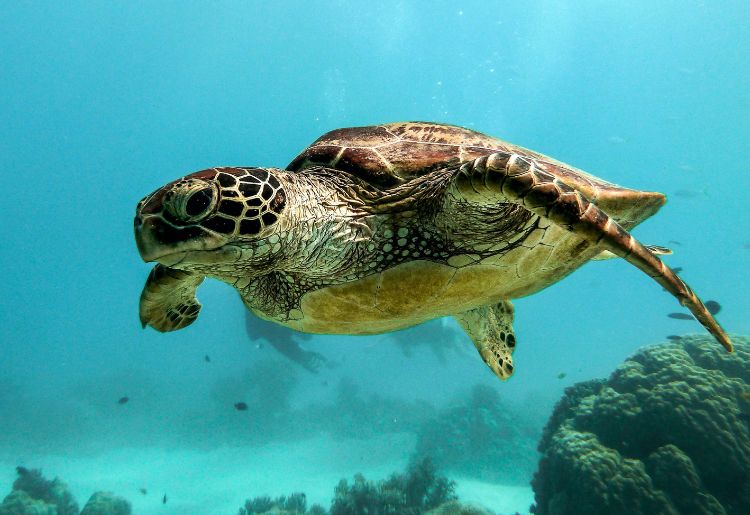When an island is very direct about why you should visit, you must take the advice. Saba is a hike, dive and dine destination and has all the tools needed to make it happen. The excellence of a Saba scuba diving experience may be attributed to its location in the Caribbean Sea as well as its dramatic coastline. Although the island is famous for its unique topography (it’s a dormant volcano), it is one of the best places in the Caribbean to see whale sharks, hammerhead sharks and manta rays.
Saba has a reputation of being one of the best snorkelling and diving destinations. There are at least 30 unique Saba scuba diving sites, each with a thriving marine environment. The island is nicknamed “The Unspoiled Queen” and everyone who visits will agree that the island lives up to this moniker in many ways. The continuous preservation of the island’s natural beauty is made possible through collaborative efforts by the 2,000 residents to protect the island and its surrounding waters.
The Saba Conservation Commission is a non-profit nature management organization also plays a major role in protecting the island. The organization, which has been in operation since 1987, is tasked with preserving and enhancing Saba’s marine and land environments. They actively manage the Saba Marine Park and enforce a zoning system that protects the marine environment, whilst allowing for recreational and business activities.

Saba Marine Park
The Saba Marine Park which was established in 1987 is a unique undertaking that has benefitted Saba. Although the marine resources around the island were not being exploited, the park was still created to ensure that the habitat would never be compromised in the present or the future.
The park is approximately 1300 hectares and consists of the entire coastline of Saba from the high-water mark to a depth of 200 feet (60 meters). This means that the valuable seabeds and overlying waters are all protected under the park designation.
Saba Marine Park is self-sustaining and thus revenue is earned through visitor fees, souvenirs and collectibles, and donations. Admission is free for residents, whilst visitors pay US$3 per dive.
Aquatic Life in Saba
There are many different types of fish around Saba and specifically in its marine park. The abundance of fish is the result of fishing and anchoring restrictions as well as educating divers about rules and regulations. The list of marine life and tropical fish in Saba includes:
- Turtles: Green Turtles, Hawksbill Turtles, Leatherback Turtles, Loggerhead Turtles
- Sharks: Hammerheads, Whale Sharks, Black-tip Reef Sharks, Grey Reef Sharks, Nurse Sharks, Caribbean Reef Sharks
- Rays: Manta Rays, Spotted Eagle Rays
- Corals and Sponges: Gorgonians, Sea Fans, Barrel Sponges, Chimney Sponges
- Nassau Groupers: Graysbys, Hinds, Coneys
- Pelagics: Horse-eye Jacks, Great Barracuda, Wahoo, Tarpon
- Schooling Fish: Wrasses, Blue Tangs, Chromis and Surgeonfish
- Reef Fish: Parrotfish, Triggerfish, Angelfish, Snappers, Grunts, Sea Horses
- Sand Dwellers: Lizardfish, Sand Divers, Flying Gurnards, Garden Eels
- Shellfish: Conch, Lobster, Crabs, Shrimp



